This is a guide to connecting flights.
There are two types of connecting flights. First are airline-protected connecting flights, second — so-called self-transfer flights. In this guide we are going to talk about both. Since both are very popular and people often don’t know the difference. We will answer all the most frequently asked questions about connecting flights rules and regulations around the world.
Did you miss a connecting flight? File a compensation claim online.
Table of Contents
- 1. Connecting Flights: Meaning
- 2. Airline-Protected Connecting Flights (You Are Protected)
- File a Claim Online
- 3. Self-Transfer Flights (You Aren’t Protected)
- 4. Airline-Protected Connecting Flights vs Self-Transfer Flights
- File a Claim Online
- 5. Checked Baggage on Connecting Flights
- 6. Carry On Baggage on Connecting Flights
- 7. Air Passenger Rights in the European Union (and UK)
- 8. Connecting Flights: Frequently Asked Questions
- Connecting flights, transit flights, transfer flights, layover flights … What’s the Difference?
- Do You Need a Visa for a Connecting Flight?
- Do You Need a Visa for a Connecting Flight in the USA?
- Can You Leave the Airport During a Layover on an International Flight?
- Can You Leave the Airport During a Layover on a Domestic Flight?
- Do You Have to Go Through Security Again for Connecting flight?
- What Happens If You Miss Your Connecting Flight?
- What Happens With Your Checked Baggage on Connecting Flights?
- What Carry On Rules Apply If You’re Flying With Different Airlines?
- Will You Have to Change Airports During a Layover?
- Do You Need a COVID test for a Connecting Flight?
- How Much Time Do You Need Between Flights?
- Can You Stay at the Airport Overnight?
- Do You Need a Travel Insurance?
- Do You Need Travel Insurance With Kiwi Guarantee?
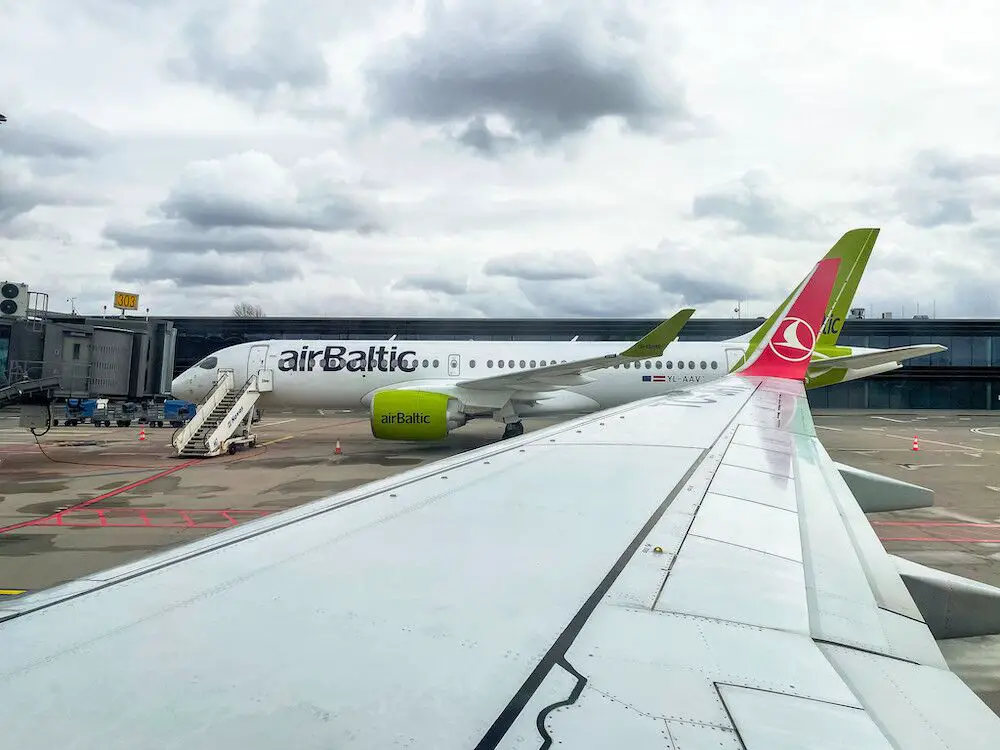
1. Connecting Flights: Meaning
If there’s more than one flight, these are connecting flights. If you are flying not directly but through some other places, these are connecting flights.
This is how most people think. And it’s partly true.
Because this is how connecting flights work. You fly from A to B and you are also stopping somewhere on the way (C), where you change planes. This whole journey, these flights, they are connecting flights. However, it’s important to understand that not all connecting flights are the same. It’s important to look at how have you booked this journey — separately or as a single journey.
1.1 What Is a Connecting Flight? (Visual Demonstration)
Here’s a simple, visual demonstration.

A is a place of departure. You’re flying from there.
C – layover airport. This is where you are stopping on your way. You change planes here. Layover meaning the stop between flights. That’s why sometimes connecting flights are referred to as layover flights. Because these are flights with a layover. Sometimes there are several layovers. Having more than three layovers is not common, mostly there are up to two layovers.
B – your final destination. The final airports you’re going to.
1.2 What Is a Layover?
What is flight layover?
A flight layover is stop between flights. Sometimes it’s referred to as a connection. All passengers get off the plane during airport layovers. What’s important to understand about flights with layovers is that everyone on the same plane may have a completely different final destination. So, don’t be surprised when during a layover everyone else goes somewhere else than you — just go to your next flight, next boarding gate.
What is flight layover? A flight layover is stop between flights. Sometimes it’s referred to as a connection.
Time between flights is called a layover time.
That is how long is a layover.
If your plane lands at 14:00, and the next one departs at 16:00, your layover time is 2 hours. Layovers vary in length. Sometimes you’ll have a very short layover of 30 minutes, but layovers can be also be up to 24 hours long (23 hours 59 minutes to be exact; that’s the maximum length of an international layover). If a stay is longer than 24 hours, it’s not a layover flight but a flight with a stopover.
1.3 Minimum Connection Time
Many people are afraid of having a short layover time.
They think they won’t make it in 30 or 45 minutes. But here is a thing about these short layovers — if these are airline-protected connecting flights (see the next paragraph!), you have nothing to worry about. If you won’t make it in time because of delay, it’s not your problem. It’s your airline’s problem. They will handle that.
They will give you a new flight. In some cases they will also give you free food and free hotel room. And what’s even better, in many cases they will also pay you a decent compensation — you can receive up to 600 euro per passenger.
And… mostly you’ll make it on time anyway.
The layovers are short on purpose.
Airlines know a thing or two about airport connections.
True, the compensation part can be hard. Airlines don’t want to pay it. You may have to fight for it. Or to wait really long, like 3, 6, 12, 28 months long. But it’s very real, nevertheless. We talk more about it further below.
Here is a thing about extra short layovers — if these are airline-protected connecting flights, you have nothing to worry about. If you won’t make it in time because of delay, it’s not your problem. It’s your airline’s problem. They will handle that.
Are you planning a self-transfer? Don’t do it with such a short layover time. In this case, it’s very tricky. Sometimes completely unreal. Do a research. Find information about recommended layover duration in particular airport. And plan from there.
1.4 Multi-City Flights
Many full-service airlines offer multi-city flights.
Having such a multi-city flight itinerary, you have the same freedom like when having several separate flights. You can visit several places, not just one. While also having the security of an airline-protected connecting flight.
It’s basically a connecting flight with several destinations.

2. Airline-Protected Connecting Flights (You Are Protected)
These are flights booked as a single journey.
These flights are protected by airline, hence the name “airline-protected connecting flights”. If you miss any of the flights due to problems with previous flight of the same journey, the airline who sold you this flight is responsible for that — mostly they will give you a new flight for free.
With airline-protected connecting flights you’re protected. If your flight is delayed or cancelled, and you miss connecting flight, your airline has to take care of you. Mostly that means that they give you a new flight for free.
Comparison: Connecting Flights vs Self-Transfer Flights
Read more: How to Book Connecting Flights?
2.1 How to Get Boarding Passes?
There are two ways to get online boarding passes.
- All flights are operated by one airline. This is the easiest option. In this case, mostly all you have to do is to check in online and download boarding passes. Usually check-in starts not earlier than 24-48 hours before the flight.
- Several airlines. You may have to check in at the airport. Wait until online check-in is available. Try to check in online. If it’s not working, don’t worry about that. Arrive to airport 2-3 hours before the flight, and check in there.
Read more: Boarding Passes for Connecting Flights
2.2 What If You’ve Missed Connecting Flight Due to Delay?
What happens if you miss a connecting flight because of a delay?
Missing a connecting flight is not fun. But it’s also not as scary as it sounds. Especially, if you are protected by airline. As long as it’s not your fault that you missed the flight, they will put you on another flight completely for free. This is how it works with most airlines globally. Now contact your airline, to ask what should you do next.
Mostly you’ll be on a new flight to your destination within 24 hours.
If you booked a flight from one airline, but the flight you missed was operated by another airline, contact the airline you booked your flight from. Legally, in this arrangement, they are called “marketing airline”. They have to book you on another flight and, in some cases, also take care of you until then.
With EU and UK airlines, and also when flying from EU and UK, you may also be entitled to compensation. More on this further below.
Missed connecting flight, different airlines?
The marketing airline has to take care of that.
Read more: Missed Connecting Flight Due to Delay
GET FLIGHT COMPENSATION
File a Claim Online
2.3 Connecting Flight Example
It’s an airline-protected connecting flight example.
The easiest way to book such a flight — directly from airline. You go the website of an airline and make a booking. To compare prices and to choose an airline, you may first use flight search websites or apps, something like skyscanner.net.
For example, you want to fly from London to Bangkok.
Here’s what I have found with Turkish Airlines.
It’s a flight from London Gatwick airport. It consists of two flights. The first flight is 3 hours and 50 minutes, and the other one is 9 hours and 5 minutes. There is an 8 hour 35 minute layover in Istanbul.

2.4 How Do You Know It’s an Airline-Protected Connecting Flight?
How can you tell it’s an airline-protected flight?
If you book flights directly from an airline (several flights on one booking), these 100% are airline-protected connecting flights. Just like in the example above, where you can see a Turkish Airlines flight from London to Bangkok via Istanbul. There are two flights that you can book as one. If you book them directly from Turkish Airlines, you’ll have proper full-service connecting flights.
You can also book the same flight from online travel agents.
There are only two types of connecting flights – airline-protected connecting flights and self-transfer connections. And if you’re using a flight search website or online flight booking website, then you will see that they mention if it’s a self-transfer flight. It’s usually highlighted somewhere. For example, here’s how you can see it on Skyscanner — I was searching for flights to Marrakech, Morocco, and then I clicked on one of the top results.
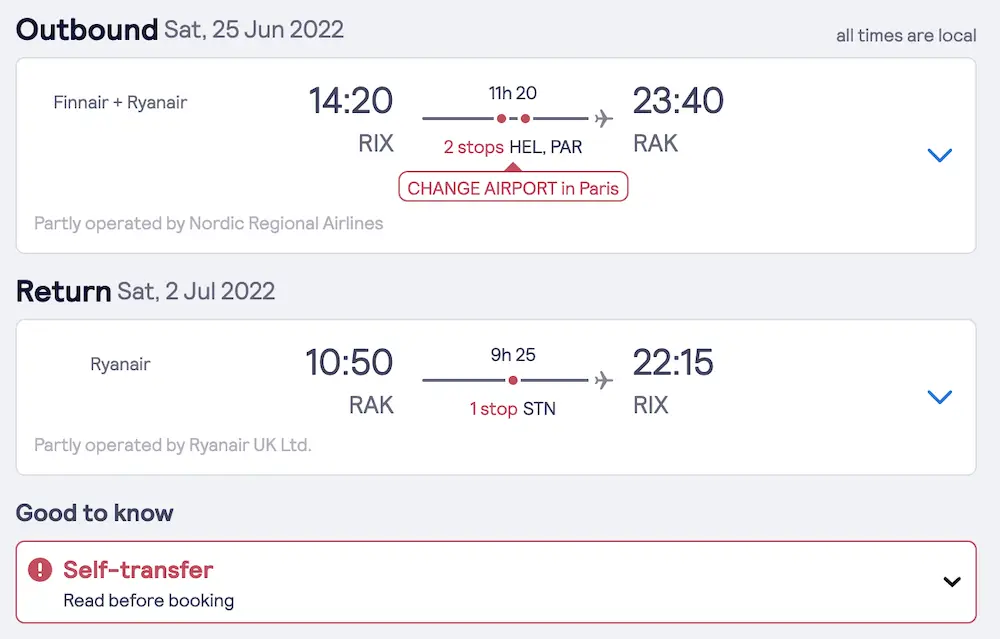
If it’s not a self transfer, then this is what you need.
You can also always double-check it on the website of an airline operating the flight. If you can find the same exact flight combination, the same flight connection, on their website, then that’s the same flight. Look if the times of departure and arrival are the same, and if the layover duration is the same. If it is the same connection, you can also book it from an online travel agent (if it’s much cheaper, for example) — you’ll get the same thing.
You’ll get an airline-protected connection.
It doesn’t matter where you book, only what you book.
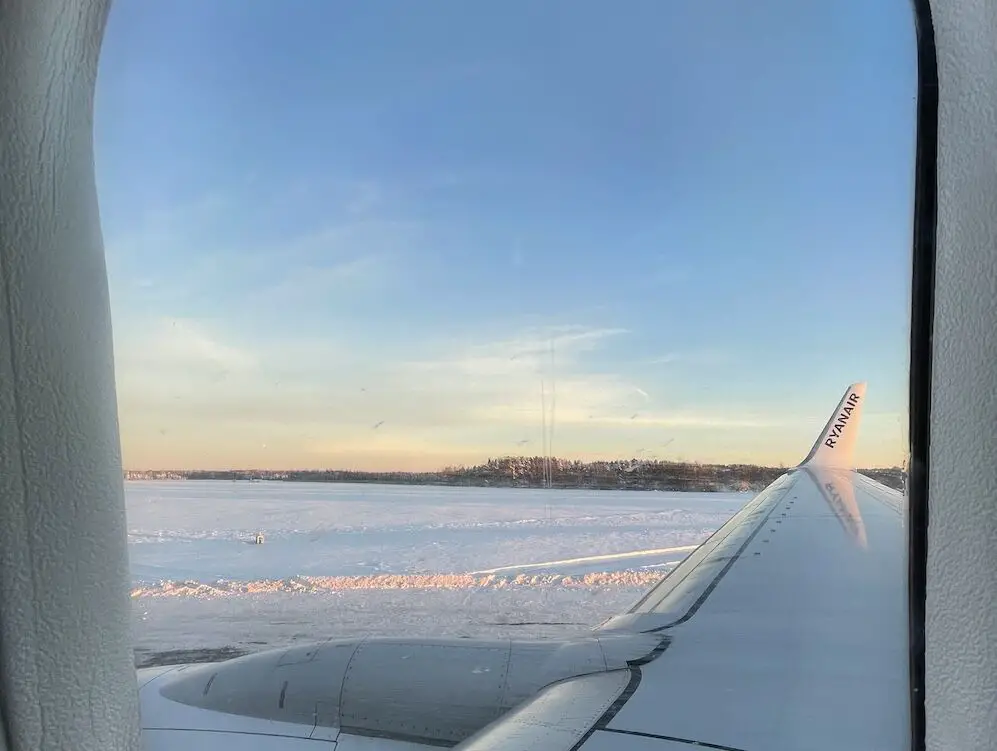
3. Self-Transfer Flights (You Aren’t Protected)
These are flights booked separately.
There are several possibilities. You may have booked flights from one or several airlines. You may have booked flights directly from airline or using third party sellers. The unifying part is this — if problems happen, mostly it’s gonna be your responsibility to find a solution. It isn’t any of the airline’s responsibility if you make it or not for the next flight.
Read more: Self-Transfer Flights
3.1 How to Get Boarding Passes?
There are two ways to get online boarding passes.
It depends from how you booked flights:
- You booked flights one by one. In this case, you will have to check in separately as well. Don’t forget that check-in will start at different times for these flights, as they depart at different times. You can do it only on the website or app of your airline.
- You booked flights as a single journey. Sites like Kiwi offer such an option. In this case, you might be able to check in at once. In some cases, Kiwi does check-in on your behalf.
3.2 Self-Transfer Flight Example 1
It’s a self-transfer connecting flight example.
There are several ways, how you can book such a transit flight (connecting flights). After all, these are just separate flights. You can book them directly from the websites of airlines. You can use online flight booking websites. And it can also be a mix of two — you book one flight directly and another flight, for example, from kiwi.com.
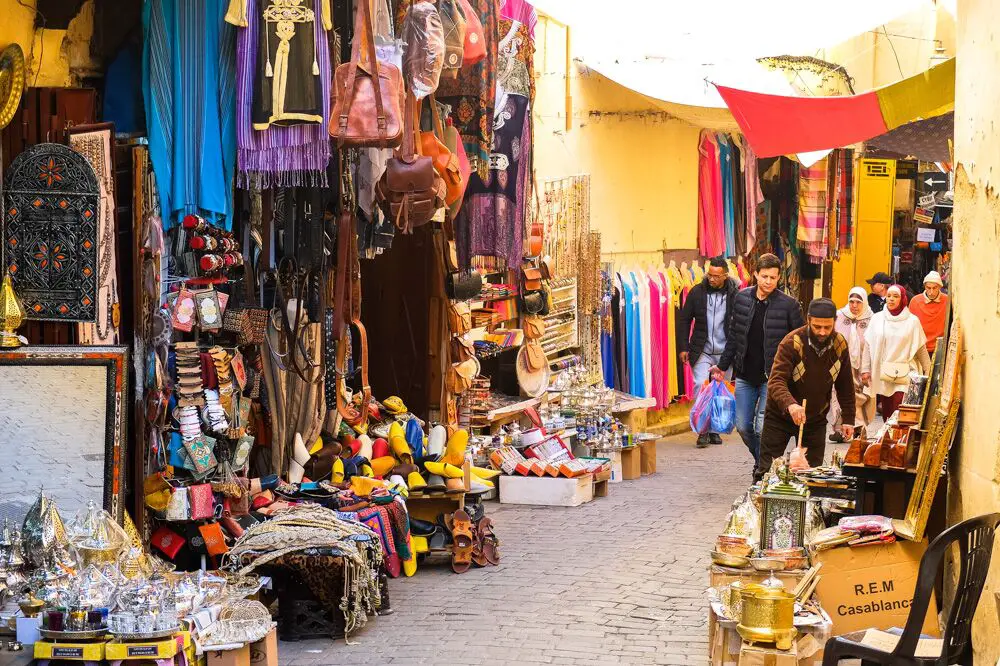
You want to travel from Riga to Fez, Morocco.
Here’s one example, how you can do it:
- You can fly from Riga to London, with Ryanair.
- And then a few hours later, or on the next day, you can fly from London to Fez, again with Ryanair.
It’s a self-transfer flight.
This journey is a self-transfer transit.
You may want to fly one-way, or you may book a return trip. In the latter case, you book two return flights: 1) Riga – London – Riga, 2) London – Fez – London. In both cases you have a self-transfer connecting flight.
3.3 Self-Transfer Example 2
This is a less common, but still common example.
Sometimes itineraries are more complicated.
And sometimes it’s a mix of both fully protected connecting flights with traditional airlines and a separately booked flight or two. Mostly people book flights like these, when they want to travel to smaller cities and towns, where there are no big airports and where only few airlines fly. Booking flights separately in a situation like this often is the only option.

You want to travel from Riga, Latvia, to Krabi, Thailand.
Here’s an example, how you can do it:
- You can find a connecting flight from Riga to Bangkok via Helsinki, Finland. Finnair is operating flights from Riga to Bangkok. These are fully protected connecting flights to Bangkok. A journey usually consists of two flights.
- There are a lot of options, how to get from Bangkok to Krabi. You can, for example, fly with Air Asia, a popular low-cost airline in Asia. It’s a separate flight. You have to transfer your luggage yourself. And you may also have to change airports in Bangkok.
Until Bangkok you have an airline-protected connecting flight. If the first flight is delayed or cancelled at some point, and you can’t make it in time for your next flight, Finnair takes care of that. In most situations they will put you on another flight for free. However, the last leg, your Bangkok – Krabi flight, includes a self-transfer layover.
This is up to you to make it in time for this flight. If you miss this last flight for whatever reason, you will have to buy a new flight. Neither Air Asia, nor Finnair will be responsible for this.
3.4 How Do You Know It’s a Self-Transfer Flight?
How can you tell it’s a self-transfer flight?
- The easiest way to tell it’s a self transit / transfer, is if you have made several bookings. It’s self-explanatory. You made several reservations. These will be treated as several reservations. These can be flights from the same company or from several. Or these can be flights from full-service traditional airlines. None of that matters — if these are separate reservations, it’s a self transfer.
- Mostly, it’s written somewhere. That’s if you’re making a booking from an online travel agent / searching for a flight connection on flight search websites. They show it at some point. For example, here’s how you can see it on Skyscanner, a popular flight search website. You click on any of the results and there you see if it’s a self transfer or not.

- Low-cost airlines sell self-transfer flights. Most of low-cost airlines around the world don’t offer protected connecting flights. If you see a connection on a flight search website or an online flight booking website, and if any of the flights is operated by a lowcoster, like Ryanair in the example above, it’s almost 100% clear that you’re looking at a self-transfer connecting flight.
3.5 How to Book Safe Self-Transfer Flights?
You have to think of a travel insurance.
It can be insurance you’re getting separately. Just make sure that it covers trip interruptions. Or you can also buy a flight that comes with an insurance. The latter is possible with Kiwi. This company sells also insured self-transfer flights. Their insurance is called Kiwi Guarantee. You can read more about Kiwi Guarantee on their website.
Read more: Are Self-Transfer Flights Safe?
4. Airline-Protected Connecting Flights vs Self-Transfer Flights
What are the pros and cons of each type?
For me, personally, the biggest thing is safety and convenience. If I’m looking for the most convenient and safest option, an airline-protected connection is a clear winner. Especially in uncertain times, like during a pandemic. At the same time, we, people, love cheap flights. And if the price is right, we may decide to go for it.
Here’s a summary of differences.
| Airline-protected connecting flights | Self-transfer flights | |
|---|---|---|
| Missed connection (not your fault) | Airline gives you a flight for free | You have to buy a new flight yourself |
| Missed connection (your fault) | You have to buy a new flight yourself | You have to buy a new flight yourself |
| Check in | One time | Separately for every flight |
| Luggage check in | One time | Collecting and rechecking at every airport |
| Airport security control | Depends from the airport (sometimes only once) | For every flight |
| Immigration control | One time | After every flight |
| Flight price | Depends | Sometimes cheaper, sometimes a lot cheaper |
One thing we haven’t included in the table is EU/ UK passenger rights regulations, and how they can help you in case of any flight related problems. It’s hard to include it in a comparison table like this. So, here’s a short explanation. We go more into details further below. In short, with protected airline connection you are more protected also in this regard.
Here’s an example. One of your flights is delayed for an hour. Just one hour. Often that’s not a problem. At the same time, if you have a short layover, it can be a very big problem. You may miss your connecting flight. And here’s the thing, if you miss a flight. With protected connection, mostly you’ll be entitled to compensation. Because, you see, you missed a flight, and airline has to give you a new flight. Mostly, this takes at least a few hours for them to sort that out.
Accordingly, you will reach your destination 3+ hours late.
That’s enough for you to be entitled to compensation in EU/UK.
All because connecting flights are treated as a single journey.
At the same time with a self transfer, you’ll get none of that. You’ll get no free flight. And you’ll get no compensation for delay. Because you have booked your flights separately. They are separate flights. Accordingly, they are treated as separate flights. And you can’t get compensation for 1 hour delay.
GET FLIGHT COMPENSATION
File a Claim Online

5. Checked Baggage on Connecting Flights
Connecting flight baggage rules are very simple.
They differ only depending on the type of connection.
5.1 Baggage on Airline-Protected Connecting Flights
What happens with baggage on connecting flights?
In this case, the airline takes care of your baggage. You check in baggage once, at the airport of departure, and it’s being taken to your final destination. Only on very few occasions, in rare exceptions, you have to collect and recheck baggage between flights. One such example is when traveling through the US.
When in doubts, just ask the airport staff during the check-in.
They will be able to answer you.
Connecting Flight Baggage Transfer: Different Airlines
With airline-protected flights the system is the same.
Everything is easy — the airline takes care of baggage.
Even if your flights are with different airlines, while it’s an airline-protected connection flight, your baggage is being taken care of. Nowadays, airlines very often share their flights — they cooperate. It may be a flight you have booked from KLM, but it’s operated by Delta. This is just one example.
It’s called a codeshare agreement.
Read more:
5.2 Baggage on Self-Transfer Connecting Flights
In this case, baggage transfer is your responsibility.
You have to collect baggage at every airport you’re stopping at. And you have to recheck baggage for every flight. If you have checked baggage, that’s one of the biggest drawbacks of self-transfer flights. All this extra effort you have to put it and extra time. If you have more than a single bag and more than a single layover, this all adds up. Take this into account when planning your travel itinerary — these things take time, sometimes hours.
Your baggage may also get delayed. So, plan your layover times accordingly. Don’t go with the shortest layover, if you can’t travel with the belongings in your checked baggage, not even for a day or two.
Connecting Flight Baggage Transfer: Different Airlines
If it’s a self transfer, then it’s a self transfer.
It doesn’t matter if the flights are operated by one or several airlines. As long as you have booked your flights separately, most likely this will be your responsibility to take care of your personal baggage transfer at the airport.
Read more: Connecting Flight Baggage Transfer: Different Airlines
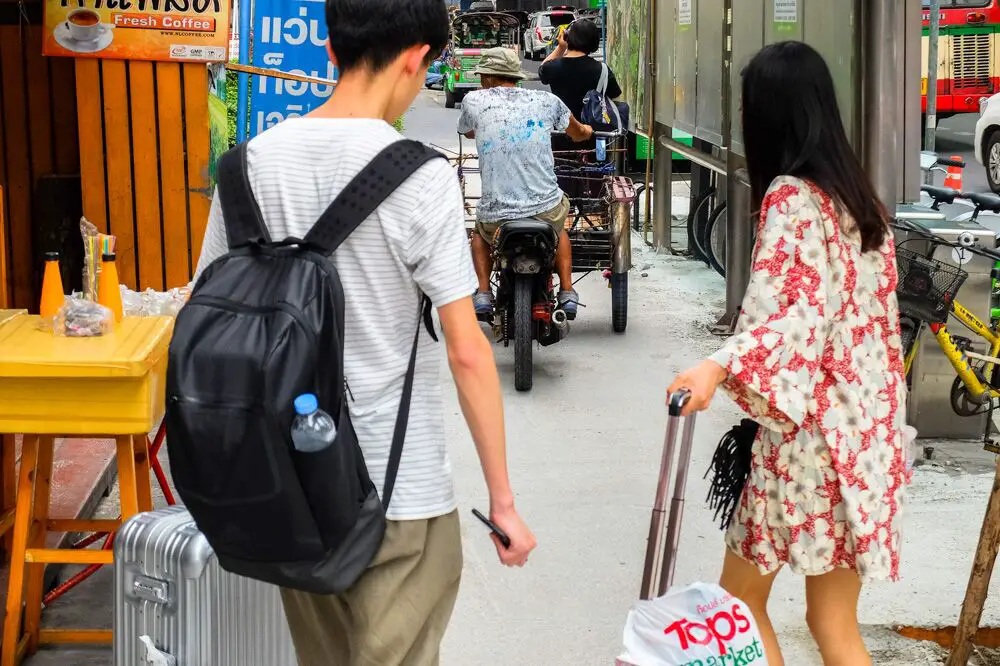
6. Carry On Baggage on Connecting Flights
What about carry on baggage rules on connecting flights?
6.1 Flight Connections With the Same Airline
Let’s assume, all your flights are with one airline.
Mostly, the baggage allowance also will be the same for all flights.
However, even in this case it’s worth double-checking the rules. Why? Because baggage allowance may differ from one destination to another. That mostly applies to checked baggage, but there are some exceptions.
6.2 Flight Connections With Different Airlines
Different airlines have different carry on baggage policies.
Number of bags, weight and dimensions differ. Check the rules before you fly or make a booking. And if you’re flying with two or more airlines, plan accordingly. If one of your flights have smaller carry on allowance, take this into account.
This applies not only to self-transfer flights.
As you probably know, nowadays, airlines share flights. So, even if it’s an airline-protected flight connection, it may still be operated by two different airlines. In fact, it happens very often. Sometimes there are more than two different airlines. For example, you may book a connecting flight from KLM, and one of your flights may be operated by airBaltic, their partner airline. You can see the operating airline when making a reservation and also in your confirmed booking.

7. Air Passenger Rights in the European Union (and UK)
Air passenger rights in the EU / UK are well regulated.
What it means, is that in many cases you are protected by the law. And if your flight gets delayed, cancelled or overbooked, you may be entitled to UK/EU flight compensation. If your flight falls under the regulation, you may receive up to 600 euro per passenger. Similar rules and regulations exist also in other parts of the world, but here we’ll focus on Europe.
In some situations you can get food coupons and free hotel room. And then there are also situations when you can get both food, hotel room and compensation from the airline. This applies both to protected connections and self-transfer flights. But don’t forget that with self-transfer every flight is considered as a separate flight (what it actually is).
| EU/UK to EU/UK | EU/UK to Other countries | Other countries to EU/UK | |
|---|---|---|---|
| EU airlines | + | + | + |
| UK airlines | + | + | + |
| Other airlines | + | + | – |
The things we’re talking about in this section apply both to EU/UK airlines and other airlines. If you’re flying with an airline registered somewhere else, these rules apply only to their flights that depart from an airport in the EU/UK.
Read more:
7.1 Right to Compensation
Here are situations when you can get compensation:
- 3+ hour flight delays (you’ve arrived to your destination 3+ hours late)
- Last-minute flight cancellations (your flight is cancelled less than 14 days before the day of departure)
- You’re denied boarding due to overbooking
It must be due to fault of the airline, not something unavoidable.
You can claim compensation yourself by contacting the airline.
Alternatively, you can hand over the case to flight compensation company.
7.2 Right to Care (Free Hotel Accommodation, Free Food)
The same regulations give you a right to care from airline.
When it comes to flight compensation, the reason of the flight disruption must be something that could be considered airline’s fault. With right to care, it doesn’t matter what’s the reason why you have to wait at the airport. As long as it isn’t due to your fault. If you have to wait 3+ hours, the airline has to take care of you.
- If it’s a few hour delay, the airline has to provide you with a meal and drinks “in reasonable relation to the waiting time”. What it means is that they should give you at least a bottle of water or any other drink, and a sandwich or bun.
- If it’s something worse than that, and if you would have to wait at the airport overnight, they have to offer you free hotel accommodation. The airline has to take care of that. Get in touch with the representatives of your airline, if they haven’t contacted you.

8. Connecting Flights: Frequently Asked Questions
You can add your questions in the comments.
We will publish and answer the most popular questions.
Here we’ll focus on airline-protected flights. See our separate FAQ on self-transfer flights here (at the end of the article).
Connecting flights, transit flights, transfer flights, layover flights … What’s the Difference?
They are all the same thing.
Do You Need a Visa for a Connecting Flight?
Mostly no.
Because you aren’t changing airports, and you don’t have to go through immigration control / passport control at the airport. It also does mean that you can’t leave the airport. But it depends from the country, and their local laws. For example, in the US you most likely will need a visa for transit.
You may need a visa for your final destination.
Read more: Do You Need a Visa for Connecting Flights?
Do You Need a Visa for a Connecting Flight in the USA?
Yes, mostly you need a visa for transit in the US.
Even if you’re only transiting in an airport (and not leaving airport). If you are eligible to the Visa Waiver Program, you can apply for ESTA. It’s like an e-visa for the US. You don’t have to print ESTA. But you may save it on your phone, just in case someone asks you to show it. In June 2022, ESTA costs 21 USD.
Apply for ESTA on the Official ESTA Application Website.
Can You Leave the Airport During a Layover on an International Flight?
It depends from the country and their entry rules.
If you don’t need a visa for this particular country, you can leave the airport during an international layover. You can also do so, if you have a necessary visa. In any case, mostly you will have to go through immigration control. Unless, you are traveling within the European Union, where there’s no internal immigration control even when traveling between different countries.
Take into account that you’ll have to go through airport security, when you’ll be coming back for your connecting flight.
Read more: Can You Leave the Airport During a Layover?
Can You Leave the Airport During a Layover on a Domestic Flight?
Yes, you can leave the airport during a domestic layover.
Also, you won’t have to go through immigration control there. Because you will have gone through it already, when arriving to the country (or because you are living there; you are in the country). But don’t forget, that you’ll have to go through airport security, when you’ll be coming back for your connecting flight.
Do You Have to Go Through Security Again for Connecting flight?
Sometimes yes, but it depends from the airport.
Often there’s at least some kind of security checkpoint between connecting flights. It may be a very smooth transit, and you may not have to take out anything from your backpack or suitcase, or even to empty your water bottle, but it may also be a “full package” with security and immigration control.
What Happens If You Miss Your Connecting Flight?
With airline-protected connections, your airline takes care of that.
Unless it’s your fault, and then you have to deal with everything yourself. In the rest of the situations, you just contact the airline and let them know what has happened. It’s their responsibility to offer you a new alternative flight to your destination. It may be a flight with the same or other airline.
In some cases you also have a right to care and / or compensation. We talk more about it in the section called “Air Passenger Rights in the European Union (and UK)”. Just scroll back a little bit.
With self-transfer flights, it’s your problem to deal with.
What Happens With Your Checked Baggage on Connecting Flights?
Your airline takes care of checked baggage transfer.
That’s the beauty of this, that you don’t have to move your baggage from one flight to another. You don’t have to recheck it. If you want to be sure that that’s exactly what’s going to happen, look at your printed boarding pass and the baggage tag attached to it. After you check in baggage, a baggage tag is being put on your boarding pass. You should be able to find the mention of its final destination – it must be the same as yours.
If you can’t find this information, just ask an airline representative, to check if your baggage is going to be sent to your final destination.
What Carry On Rules Apply If You’re Flying With Different Airlines?
Operating airline’s rules.
What airline is operating this particular flight? This is the airline which rules apply to you on this particular flight. If you bought a flight from KLM but it’s operated by airBaltic, you must follow the airBaltic’s rules.
Will You Have to Change Airports During a Layover?
If it’s a connecting flight then no.
You may have to change airport terminals but never an airport. Even though, sometimes it may seem like you’re changing an airport. Because some international airports are very big, and you have to use an airport train or bus to travel between airport terminals. It may feel like traveling between airports.
If, however, you have to change airports, this is a clear sign that you have booked or are about to book a self-transfer flight.
Do You Need a COVID test for a Connecting Flight?
You may be asked to have a COVID test for a transit.
It depends from the local laws of the country where you are transiting through. Some are more strict than others.
How Much Time Do You Need Between Flights?
If it’s a protected connecting flight, anything is okay.
If the airline says a 30-minute layover is enough for you to make it, then it’s enough. And, in any case, it’s their responsibility, if due to their fault, you miss your connection (often you can get compensation). You may have to walk fast. You won’t have time for coffee or shopping. But you should be able to make it in time.
If it’s a self-transfer transit, then it’s different:
- We recommend minimum 2 hours
- If you have checked baggage — minimum 3-4 hours
- If you will be going through immigration — 4+ hours
Can You Stay at the Airport Overnight?
Yes, as long as the airport is open during the night.
If you have a connecting flight with an overnight layover, it’s an airport that stays open during a night. For more information on the topic and the situation in different airports around the world, check out the Guide to Sleeping in Airports.
Do You Need a Travel Insurance?
Yes. And the sooner you buy it, the better.
Because, you see, flight changes may happen at any day.
And, if you’re buying travel insurance to be protected in case of itinerary changes, sooner is better. Remember this — price of insurance doesn’t change if you buy it earlier. Because duration of insurance will be the same, the duration of your trip. It’s just that, when it comes to flight changes, it starts working immediately after purchase.
Do You Need Travel Insurance With Kiwi Guarantee?
Yes, absolutely.
Because Kiwi Guarantee isn’t a complete travel insurance. Kiwi Guarantee protects only in case of flight delays, cancellations and trip interruptions. It doesn’t protect you in case of health problems abroad, same as it doesn’t give you any protection in case of lost travel documents, problems with car rental or any other problems not directly related to flights booked from Kiwi.
Do you have anything to add? Or maybe you still have questions about connecting flights? About airline connections? Airline compensations?
About the author:
Kaspars is a digital nomad and travel blogger who’s been traveling the world extensively since 2013. Since 2017, Kaspars has been writing about the less-known aspects of air travel, things like air passenger rights laws and regulations. He’s really good at simplifying complex concepts and making them easily understandable. Kaspars favorite airlines are Qatar Airways and Turkish Airlines.
